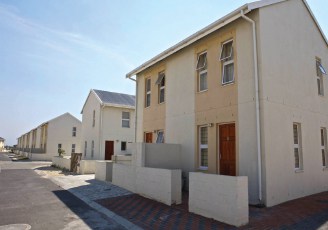The home stretch
Like to know the solution to the housing crisis in the world’s major cities? The truth is there is no single solution. But innovative approaches incorporating flexibility and creativity will go a long way to meet housing needs writes Paul Peninger, AECOM Director of Sustainable Economics and housing specialist. He offers his six key steps to help unlock potential and production
From London to Los Angeles and São Paulo to Sydney, the world’s largest and most influential cities are experiencing a period of unprecedented growth and prosperity. Magnets for talent and capital, global cities are laboratories for the most important and transformative innovations — and not just in terms of economics, but also in culture and society. At the same time it is widely recognized that cities are facing massive infrastructure challenges that pose a threat to livability and vitality.
As highlighted in the recent Global Cities Business Alliance (GCBA) Housing for Inclusive Cities* report, the lack of an adequate supply of accessible and affordable housing is chief among the infrastructure challenges threatening long-term resilience in key global cities. In almost every major city in the world, workers at all income levels face mounting challenges to finding decent and accessible housing. This, in turn, contributes to challenges for employers trying to attract and retain talent.
What makes housing affordable?
Traditionally, a housing unit is considered affordable when it costs less than 30 percent of total household income to rent or own. The Housing for Inclusive Cities report shows that in most high-cost cities a large percentage of households pay far for more than this, and lower-income households and special-needs populations are often severely cost burdened to the extent that they risk homelessness or must go without other basic necessities. We also know that as part of the challenge in finding solutions to the housing crisis, it’s crucial to factor in the broader agenda of urban infrastructure investment and the need for increased transportation connectivity.
Against this backdrop, this article looks at innovative housing solutions from five leading global cities: London, Los Angeles, New York, San Francisco and Sydney.
Six steps to help solve the housing crisis

1. Make it easier to build more
The most obvious solution to housing shortages is to rationalize and streamline regulations making it easier for developers to build more. While cities have a vested interest in managing development and ensuring that new housing is well located and designed to meet community needs, it is also true that the weight of regulations can result in excessive costs and increased financial risk for developers. To meet demand, there is a broad consensus in housing policy circles about the need for thoroughgoing regulatory reform to remove development barriers, particularly for urban infill. Beyond simplifying housing regulations overall, cities are also beginning to embrace new, lower-cost building technologies like modular construction and other lower-cost building types. While still meeting basic health and safety standards, new building types can help cut costs and deliver new housing faster and more efficiently than traditional wood, concrete and steel-frame construction types.
2. Invest in affordable housing production
Overall, building more housing is the foundation of a successful urban housing strategy, but it’s not enough. We know from research and experience in gentrifying urban neighborhoods that just building more doesn’t fix the affordability gap at the bottom of the income spectrum. Fortunately, there are proven models for increasing affordable housing production and opportunities exist to invest more in these models to achieve a meaningful impact. The U.S. cities examined for this article all partner extensively with affordable housing developers (for-profit and nonprofit) on financing housing with a variety of local, state and federal sources. Most importantly, they all make extensive use of a little-known but very successful federal program called the Low Income Housing Tax Credit (LIHTC). Since 1986, it is estimated that almost three million new units have been built using these tax credits, and because of its success the LIHTC program enjoys broad bipartisan support. In recognition that the LIHTC model works, new proposed legislation would increase program spending by 50 percent. This relatively small budget allocation (representing less than 10 percent of the budget equivalent for ownership mortgage interest tax deductions) would increase production by an estimated 400,000 units nationwide over the coming decade.
In the U.K. too, there is an established nongovernmental housing sector with a successful track record of building high-quality affordable housing. To support the continued expansion of this sector, there is now a proposal from the new London mayoral administration to create a £200 million investment scheme for developers and housing associations that will help accelerate the building of thousands of new low-cost homes.
3. Retrofit the existing housing stock to meet changing needs
Just as commercial real estate markets are adapting to accommodate change, residential building stock should also have the capacity to adapt. In particular, it is likely that shared housing services such as WeLive will increasingly deliver more consumer choice. An example of how existing housing can meet changing needs is through accessory dwelling units (ADUs), such as small units adjacent to the main dwelling for extended family members. In many places, regulations prohibit the leasing of ADUs. While there may be neighborhood concerns about potential overcrowding and on-street parking scarcity, efforts are underway in L.A., New York and San Francisco to remove constraints on this source of affordable housing supply
4. Build housing, not parking
The cost of building car parking is often the biggest hurdle to the financial feasibility of new developments. By some estimates, in the U.S. and Canada each structured parking space built for a multi-family building can increase costs by as much as 12.5 percent, sometimes more. With the emergence of car sharing services and declining rates of private automobile ownership in urban areas, the concept of decoupling parking requirements from residential building is gaining support. When parking is needed, it should be developed as a separate product either within the same building or as part of a common parking structure serving an entire neighbourhood.
5. Capture the value from public investments and planning
When public authorities make infrastructure investments or increase development capacity through planning actions they are conveying added value to landowners in the affected area. To properly leverage these types of investments towards supporting urban infrastructure and key public services, many cities have developed strategies to capture a portion of this increased value. Important examples of major urban developments where value capture strategies have been implemented include Crossrail in London, Transbay Terminal in San Francisco and Hudson Yards in New York. In all of these cases residential development is projected to deliver the greatest increase in land and development value. One form of value capture is through so-called inclusionary housing programs which incentivize or require residential developers to set aside some portion of new housing for low- and moderate-income households. All five cities we looked at for this article have some form of inclusionary housing, and San Francisco and New York recently took steps to strengthen their programs in response to pressure from residents concerned about rising housing costs.
6. Partner with the business community
Cities need strong private-sector partnerships to address housing needs. Whether it’s working directly on employer-assisted housing as in the Deloitte at East Village Olympic Park in London, or through the policy advocacy efforts of organizations like the Los Angeles Business Council, businesses are increasingly engaged in housing issues at all levels. In the San Francisco Bay Area, the Silicon Valley Leadership Group has long been at the forefront of promoting affordable housing through the creation of a housing trust fund as well as through housing policy advocacy at the local, regional and state levels. Businesses across the tech sector understand that if they don’t contribute to solving the housing problem it will be impossible to attract and retain the talent that they need to continue growing.


Designs on the townships
As part of the extensive program to improve the quality of life in informal settlements surrounding Cape Town, South Africa, work is underway in many areas to upgrade or replace thousands of homes and all types of infrastructure from roads and green spaces to renewable energy generation and industrial space. Along with a wide range of projects taking care of planning and the physical environment, AECOM is working with local people to strengthen community cohesion and build thriving, well-served, long-term neighborhoods.
1.3m
This number of new jobs and $30 billion-worth of additional spending power could be created if housing were more accessible in these leading global cities.
$2,824*
Of the 15 focus cities examined, in 2015 San Francisco had the most expensive average monthly rents of $2,824. This was closely followed by New York and Abu Dhabi at $2,629 and $2,460 respectively. The cheapest housing was available in Mexico City and São Paulo at $385 and $480 respectively.
30%
Only one of the 15 focus cities — Boston — has normal rents taking up no more than 30 percent of average net income. Although the average cost of housing in the city is still relatively high compared to much of the world, wages are correspondingly high.
$12bn
Rising house prices have dramatically pushed up company wage bills. Compared to a hypothetical situation where housing costs rose in line with inflation since 2010, wages in New York City in 2015 could have been as much as $12 billion higher, or 3.8 percent of the total wage bill. This is because higher housing costs lead to greater wage demands from workers. Firms may need to pay employees more to retain staff and attract top talent.
*All currency references are in USD


Miniature city: Metropolis in Los Angeles is a mixed-use development comprising a 350-room hotel, more than 1500 condominiums, retail, and parking; an AECOM Construction Services project







